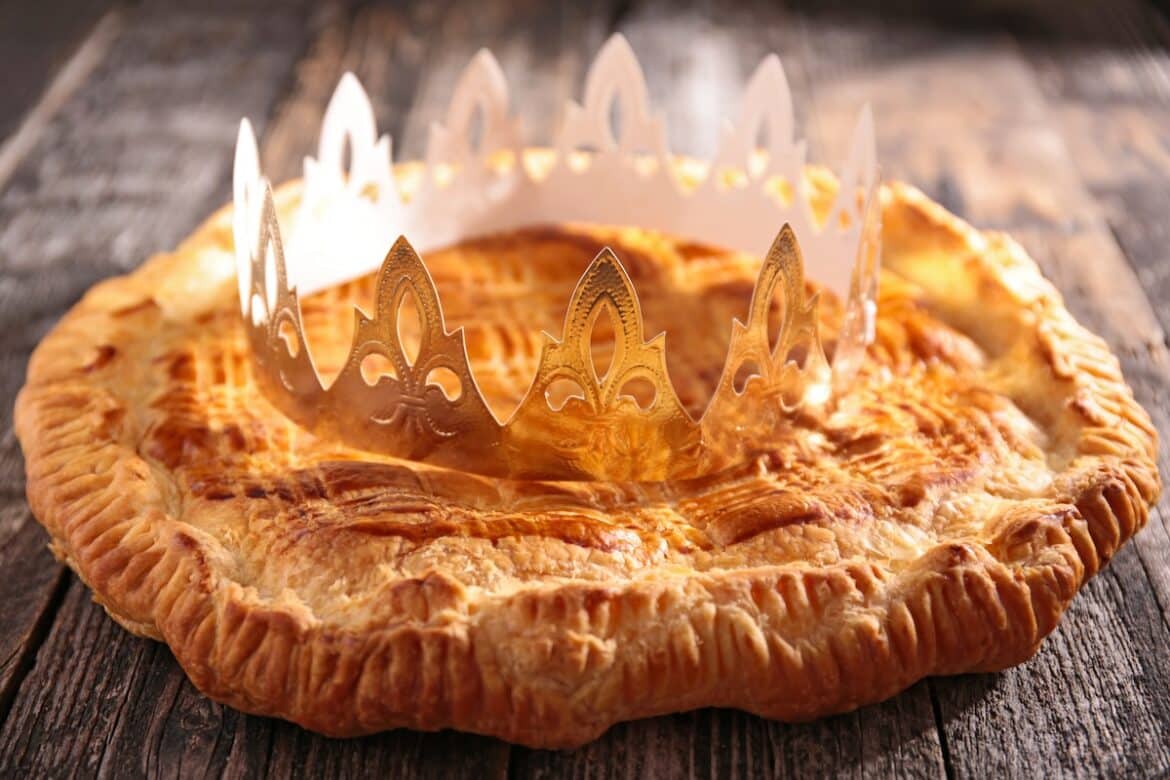Photo by © Margouillat
What better way to ring in the new year than with a sweet and royal treat? The “Galette des Rois,” or King’s Cake, is a quintessential French tradition that graces tables around France each January. Following the holidays, every boulangerie (bakery) and pâtisserie (pastry shop) stacks their display cases with these delicious round tarts in all sizes – encouraging everyone to take part in the tradition, no matter the size of your home or party.
SUBSCRIBE TO THE MAGAZINE
Like many French customs, the Galette des Rois celebration has a rich and varied history. Read on to discover the tradition’s origins, evolution, and enduring significance in French culture. Plus, check out our recipe at the end to bring the Galette des Rois tradition to your home this January!
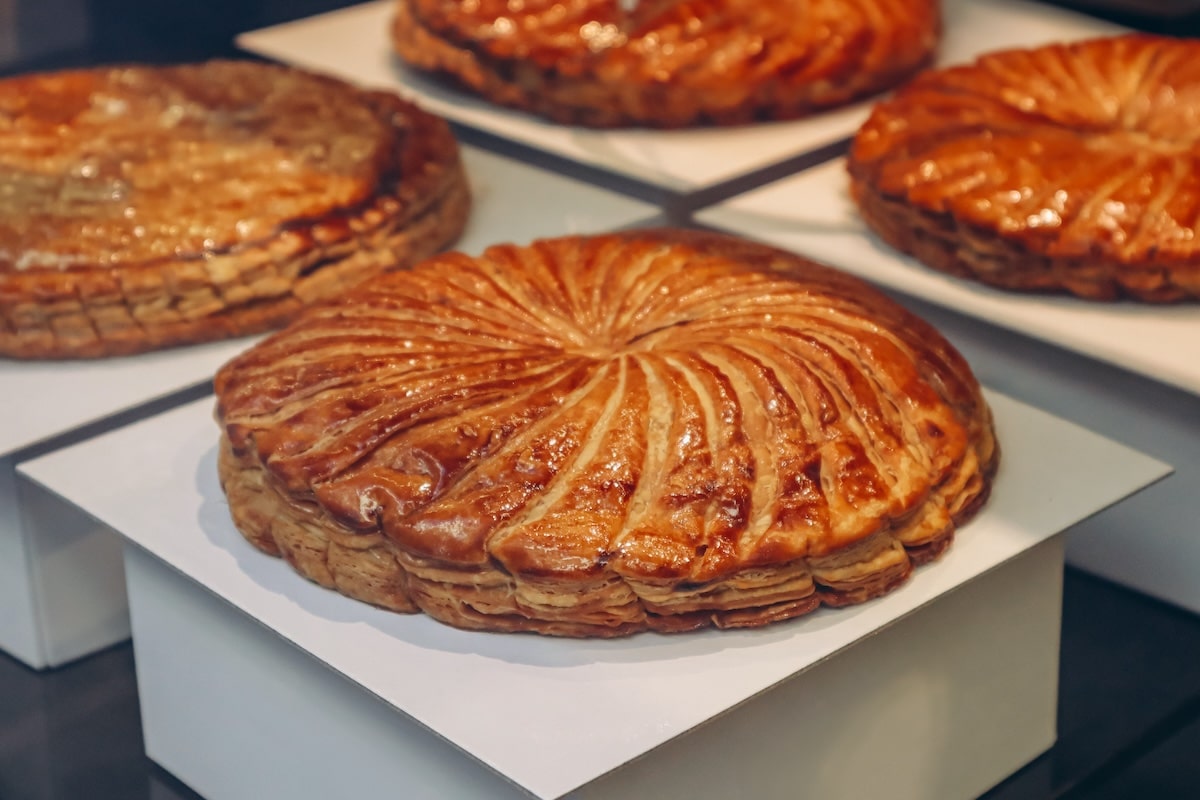
What is a Galette des Rois?
Traditionally, the galette is a simple round tart made of puff pastry filled with frangipane — a rich almond cream. The round shape of the galette symbolized the sun, a nod to the winter solstice and renewal. In the south, the “Gâteau des Rois” is more like a brioche ring, adorned with candied fruits and sugar. Each region puts its unique stamp on the tradition, reflecting the diverse culinary heritage of France.
Inside each galette, a small token known as the “fève” (originally a dried bean) is hidden. Over time, the fève evolved from a humble bean into a variety of miniature trinkets made from porcelain or plastic. Collecting these fèves has even become a hobby for some enthusiasts, known as “favophiles.”
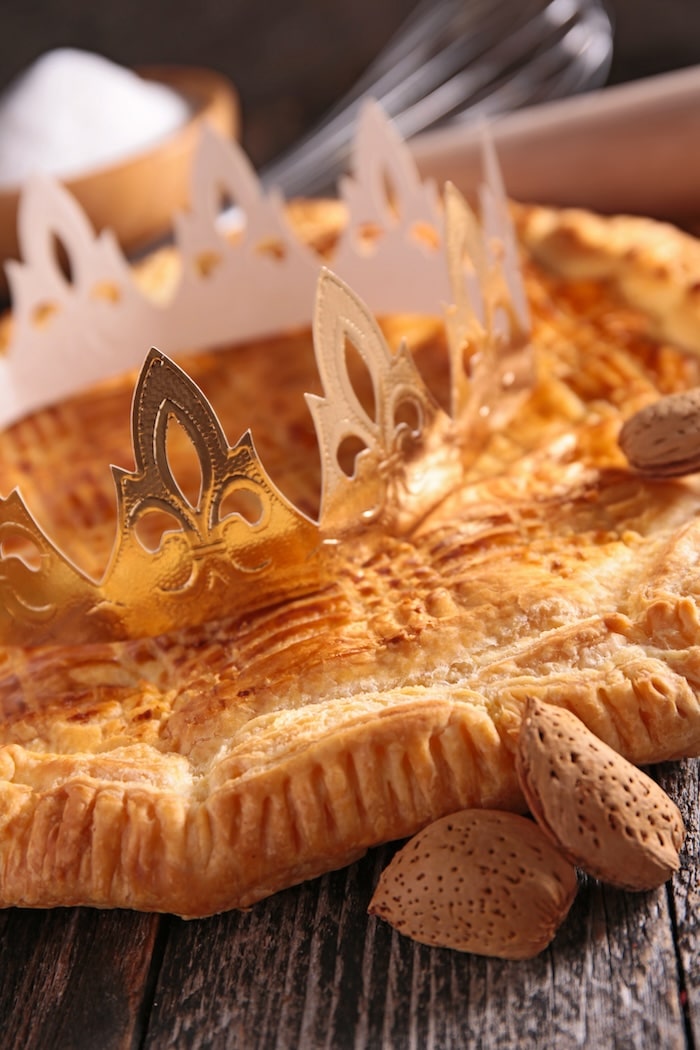
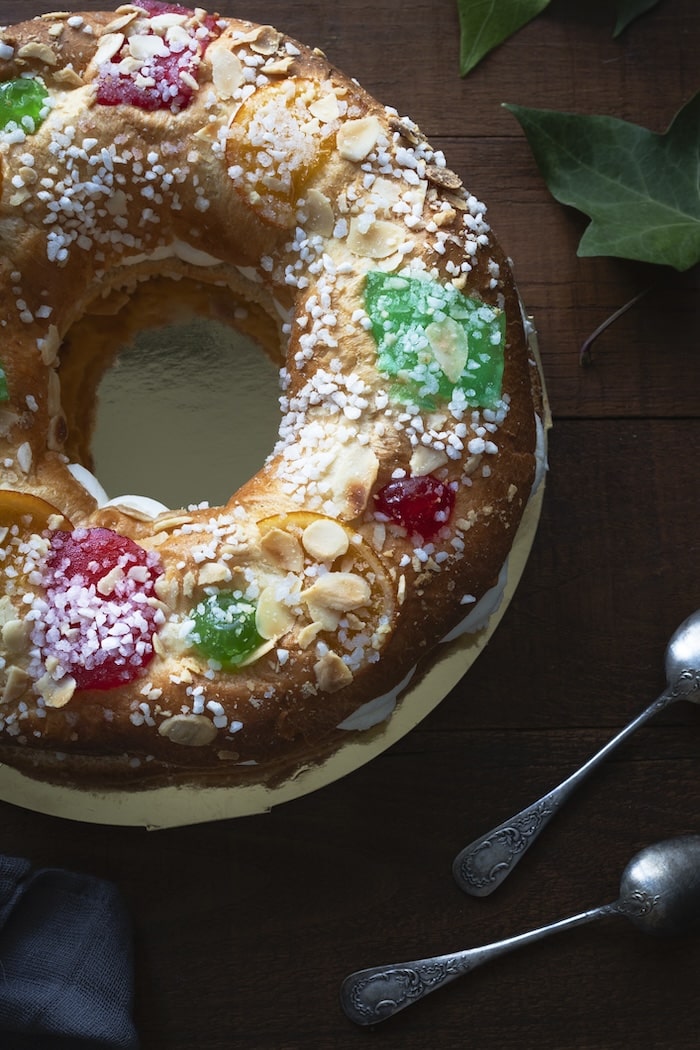
Beyond France, the Galette des Rois has inspired similar traditions worldwide. In Spain and Latin America, the “Roscón de Reyes” is enjoyed, while in New Orleans, the King Cake is synonymous with Mardi Gras. These international versions often feature distinct flavors and customs but share the same joyful spirit.
History of the Galette des Rois
While the King’s cake is widely known to celebrate Epiphany, the Christian feast on the 12th day following Christmas marking the arrival of the Three Wise Men in Bethlehem, the origins of the dessert are believed to date back to Roman times.
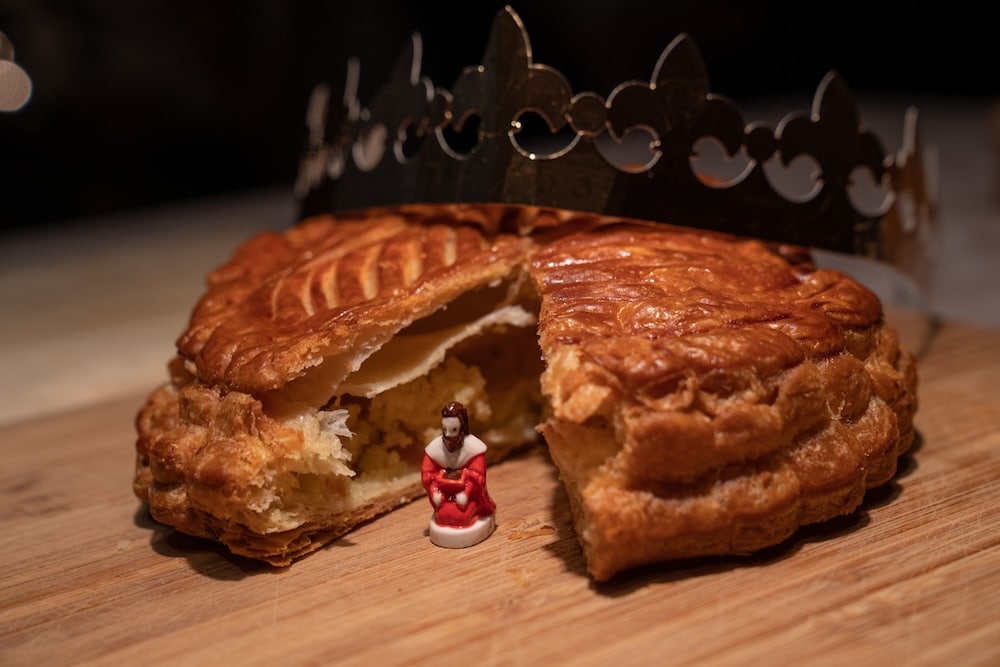
During the Saturnalia festival, a mid-winter celebration in honor of Saturn, the Romans baked a round cake and hid a bean inside. The festival signaled the beginning of the return of longer days following the winter solstice. As Christianity spread across Europe, the pagan bean transformed into a symbol of the Magi’s visit to the Christ child. By the Middle Ages, the custom had become firmly entrenched in French society.
How to Celebrate and Serve the Cake
Today, the Galette des Rois is shared throughout France in the days and weeks around January 6th. It is important to note that the ritual is as much a part of the tradition as the pastry itself. According to custom, the youngest person in the group hides under the table while the galette is sliced. That person then must call out the name of everyone around the table to receive a piece, ensuring the distribution is random and fair.
Whoever finds the fève in their slice is crowned king or queen for the day and dons the golden paper crown that accompanies the galette!
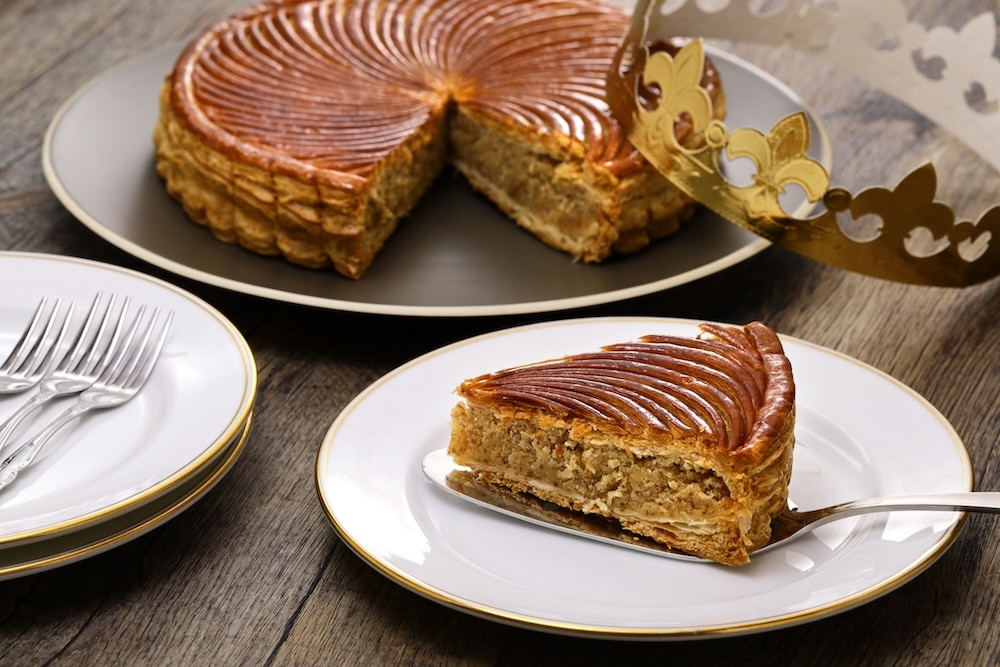
Recipe for Galette des Rois
Want to celebrate the new year with your own Galette des Rois? Try your hand at this recipe by Sharon Santoni!
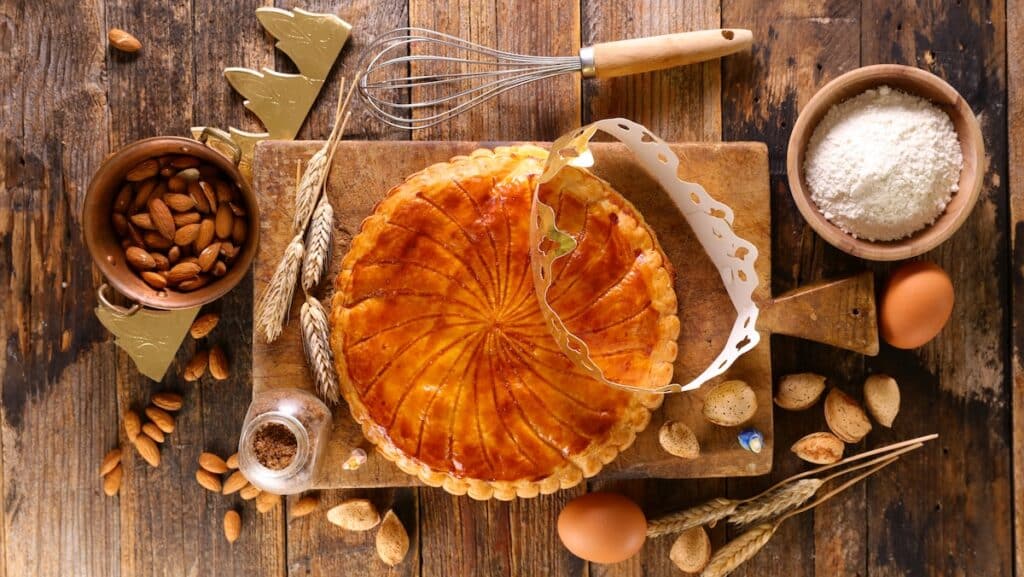
Ingredients:
- 2 blocks ready-made puff pastry
- 2 eggs
- 2/3 cup (100 g) ground almonds
- 1/3 cup (70 g) softened butter
- 1/2 cup (100 g) sugar
- 1 tbsp of plain flour
- 1 tbsp of rum
- Optional: 1 porcelain bean (the fève)
Instructions:
Preheat the oven to 400°F (200°C).
Roll out the puff pastry into two large identical rounds, placing one on a baking sheet.
Mix together all the other ingredients (except for one egg yolk — this will be used for brushing the pastry case).
Spread the almond mixture onto the first round, careful to go no closer than half an inch to the edge. If using, place the fève somewhere on the first pastry. Carefully lay the second round of pastry over the top, and seal the edges with a little water. Brush the top piece of pastry and around the sides with the egg yolk you set aside.
Bake in the oven until golden, for about 25 minutes.
Enjoy! Note: the galette can be eaten cold, but it is best slightly warm.

